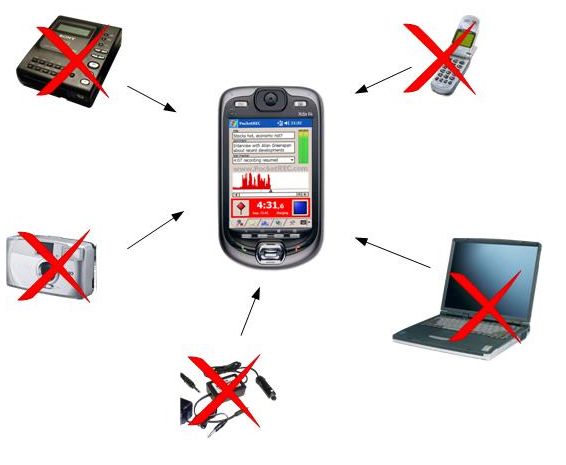Canada is one of the countries where consumers pay the highest mobile contract fees in the world. In short, this situation is mainly due to an oligopolistic/cartelistic structure that favors providers/retailers over consumers, which lowers competition and encourages scarcity on the supply side. The customer empowerment concept can essentially be thrown away for that particular market. To better understand how this market is evolving in Canada, and especially in Quebec, one interesting approach, that some may argue simplistic, is to use the 5 components of the Porter model: (1) manufacturers, (2) retailers/providers, (3) new entries, (4) substitute products, and (5) consumers.
1. Manufacturers
Let’s start with manufacturers. This is where the competition is most aggressive, since it is an international competition. Companies continue to evolve and many new products are launched. The following companies are actually selling/competing in Canada.
1. Apple (iPhone)
2. HP
3. HTC
4. LG
5. Motorola
6. Nokia
7. Palm
8. Research in Motion (BlackBerrY)
9. Samsung
10. Sanyo
2. Retailers/providers
Providers have to be considered as the starting point of our anti-competition story. First, there are not many providers/retailers, and secondly, all of these providers control other sub-brands.
1. Rogers controls Fido
2. Telus controls Koodo
3. Bell controls Solo & rent its network to Virgin Mobile
Thirdly, as in most countries, the low number of providers encourages exclusivity for a specific phone. For instance, Telus has, at the time being, exclusivity on the HTC Pro 2 which reinforces the power of the provider over consumers.
3. New entries
The end of this oligopolistic structure is still under legal fights, notably for access to networks. Up to 6 providers (for more on the topic, I would suggest to read the following post by Ian Hardy) are supposed to join the market in the next few years. Here is the list:
1. DAVE Wireless
2. EastLink
3. Globalive
4. Public Mobile
5. Shaw
6. Videotron (already slowly entered)
Like in most oligopolistic markets, the entry of these new competitors would favor lower prices and give more power to consumers.
4. Substitute products
In comparison to other products, with the emergence of powerful smartphones that are integrating features (see my post entitled Three types of convergence – Is the future friendly? for a discussion about convergence), the mobile market in Canada is taking market shares away from other products such as cameras, MP3 players, electronic agendas,etc…
5. Consumers
Many customers are still locked-in with awful 3-years contracts. Furthermore, the structure of monthly contract fees encourages these 3-year contracts. Some providers have even started to pay the end of some consumers contracts’ with another provider in order to gain new clients they would thereafter locked-in with 3-year contracts.
Conclusion
To conclude, the mobile market in Canada doesn’t favor competition at all which puts the consumers handicapped with expensive contracts. However, the possible entry of new providers should favor more competition and lower the prices in the next few years. Let’s wait and see what the future will be, and like the Telus catchy sentence say, we only hope that the “future is friendly” for the consumers that we are? Any comments?
Jean-Francois Belisle

